 |
Written by Liz McDermott |

Understanding the symbols found in Safety Data Sheets (SDS) can take some time. In this quick guide, we will help you navigate through the complex world of the Globally Harmonized System (GHS) of chemical labeling of hazardous products.
Safety professionals responsible for WHMIS training or OSHA hazard communication will find that this article provides the knowledge needed to interpret and utilize SDS pictograms effectively.
What are WHMIS and OSHA, and what are their roles in hazard symbols?
The Workplace Hazardous Materials Information System (WHMIS) is a comprehensive system for classifying and labeling hazardous materials in Canada. In the United States, OSHA (Occupational Safety and Health Administration) is responsible for workplace safety and occupational health that enforces a Hazard Communication standard.
WHMIS and OSHA were updated to align with the Globally Harmonized System (GHS), which provides standardized symbols and labeling requirements to ensure consistent communication of hazards related to hazardous substances and mixtures in the workplace. WHMIS 2015 is the version that includes this harmonized system of classification using nine WHMIS symbols.
The purpose of WHMIS and OSHA is to provide workers with the information they need to handle hazardous materials safely. This includes information about the hazards associated with a substance, safe handling procedures, and emergency response recommendations.
What are Hazard Symbols?
Hazard symbols, also known as hazard pictograms or WHMIS symbols, are standardized symbols used to convey specific types of hazards associated with a chemical. These symbols are an important part of SDSs and provide a visual representation of the potential dangers posed by a substance. Each symbol corresponds to a hazard class, such as flammable, corrosive, or toxic.
Hazard symbols are crucial for workplace safety, as they allow workers to identify the hazards associated with a particular substance quickly. By understanding these symbols, workers can take appropriate precautions and minimize the risk of accidents or injuries.
Consider Vubiz's WHMIS training and Hazcom training courses designed to improve your workforce's knowledge of SDS hazard symbols.
How to Read and Interpret SDS Pictograms
Reading and interpreting SDS hazard pictograms requires understanding the different hazard classes and categories. The GHS divides hazards into three main classes, and each class is further divided into categories to provide more specific information about the nature of the specific hazard classes.
To read and interpret SDS pictograms effectively, it is essential to familiarize yourself with the different classes and categories of hazards. This will allow you to quickly identify the potential dangers associated with a substance and take appropriate precautions.
Understanding The Different Classes of Hazards
The GHS classifies hazard pictograms and WHMIS symbols into three main hazard categories, each representing a hazard class:
Physical Hazards
A physical hazard can cause physical harm or damage to property, such as flammable substances, explosive materials, and corrosive substances. The corresponding pictograms for flammable gases and physical hazards include a flame, an exploding bomb, and a corrosion symbol, respectively.
Health Hazards
A health hazard can cause adverse serious health effects, such as respiratory problems, skin irritation, or carcinogenicity. It can be categorized into acute toxicity, skin corrosion/irritation, respiratory sensitization, and more. The corresponding pictograms for health hazards include a skull and crossbones, an exclamation mark, a skull and crossbones symbol, and a health hazard symbol, among others.
Environmental Hazards
An environmental hazard can cause damage to the environment, such as aquatic toxicity or ozone depletion, and is categorized into acute aquatic toxicity, chronic aquatic toxicity, and more. The corresponding pictograms for environmental hazards include a dead fish and a dead tree symbol.
Hazard Statement
Hazard Statements, or H-Statements, are important to the GHS classification. Their purpose is to provide standardized wording that indicates the hazards associated with a product, including the level of danger involved. In addition to Hazard Statements, the GHS includes Precaution Statements, which offer standardized precautionary language. Both types of statements can typically be found on product labels or SDSs. In the European Union, Hazard Statements have replaced Risk phrases.
Each Hazard Statement is assigned a unique numerical code, which can be useful when translating labels and Safety Data Sheets into different languages. However, it's important to note that these codes should not be used as a substitute for the statement.
The codes follow a specific format, with "H" indicating Hazard Statement, "n" representing the hazard category (2 for physical hazards, 3 for health hazards, and 4 for environmental hazards), and "xx" being a sequential numbering system. For example, you might come across a statement like "May be corrosive to metals (H290)" on a Safety Data Sheet or label. In this case, "H" indicates a Hazard, "2" signifies a physical hazard, and "90" is part of the numbering scheme.
List of GHS Hazard Pictograms
The GHS set of standardized hazard pictograms represents the different hazard classes and categories. These symbols are found in SDS and product labels to provide a quick and visual representation of the potential dangers associated with a substance. To comply with WHMIS and OSHA's Hazard Communication Standard (HCS), labels must feature these pictograms, which are recognizable by their red border and white background, each representing a specific hazard or set of hazards. The classification of the chemical hazard determines which pictogram is used on the label.
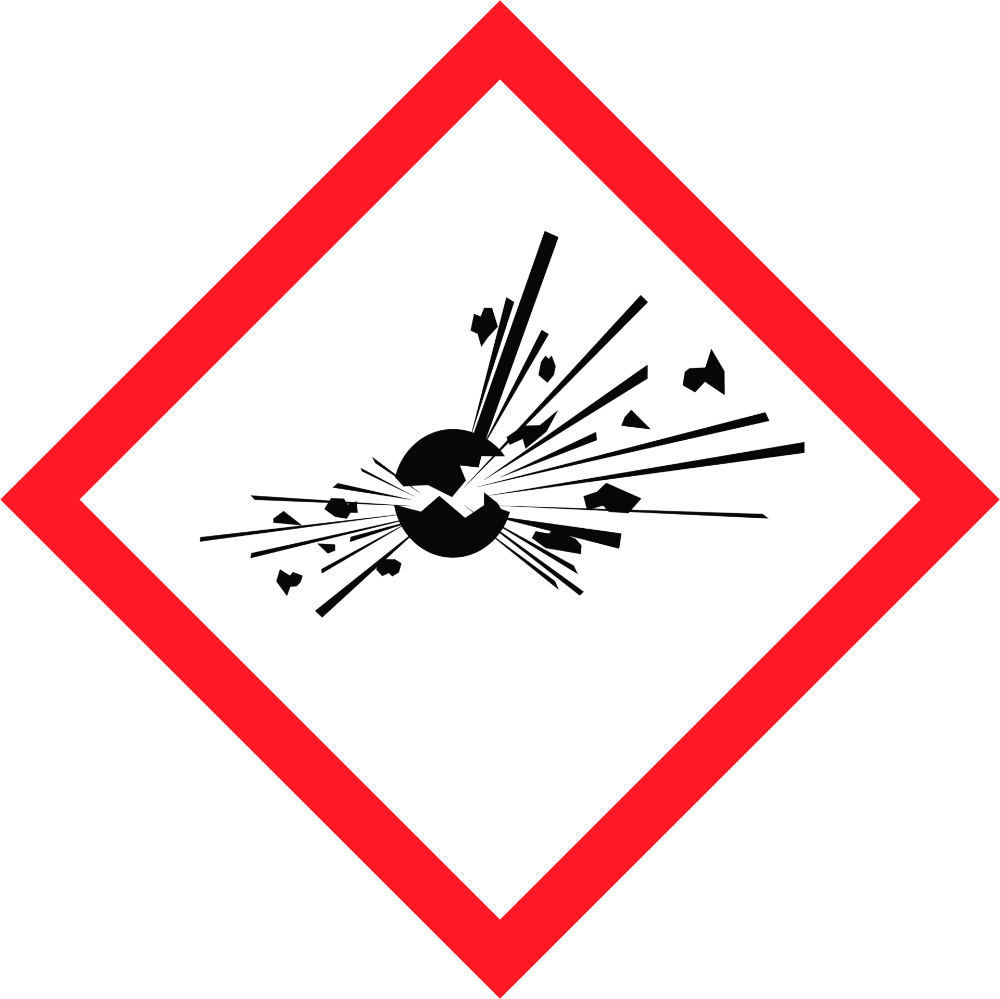
Exploding Bomb Pictogram and Definition
The exploding bomb symbol appears on the chemical labels of substances that have the potential to cause damage to their surroundings through a chemical reaction that can take on various forms, such as solids or liquids. Some chemicals, known as self-reactive substances, can ignite or explode due to heat alone, without requiring air. Organic peroxides, too, can become a fire or explosion hazard when subjected to heat.
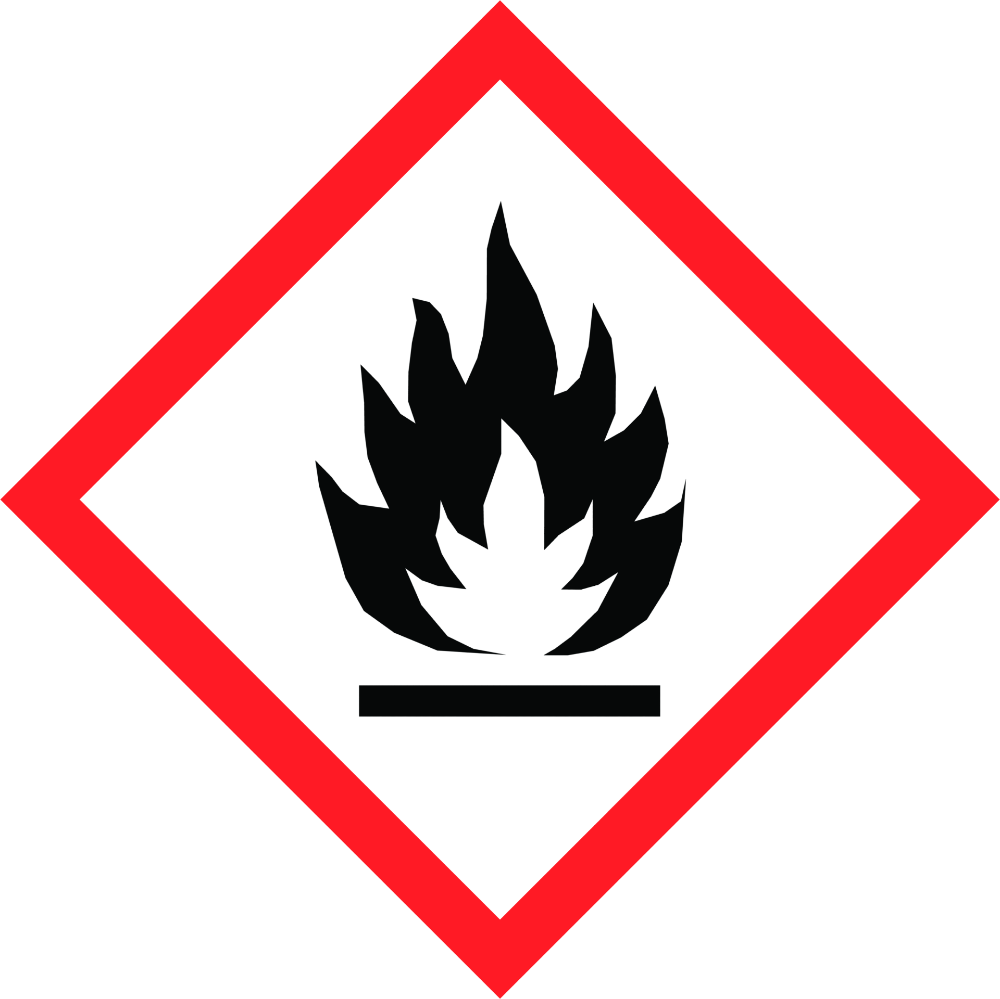
Flame Symbol and Definition
The flame pictogram is placed on combustible materials such as:
- Flammable materials or substances that emit flammable gases, which can be in the form of flammable gases such as aerosols, flammable liquids, or flammable solids that have the ability to ignite or burn under certain conditions.
- Self-reactive substances may generate heat independently and cause fires or explosions without air.
- Pyrophoric liquids can ignite within just five minutes of contact with air and should also be handled with care.
- Self-heating substances may catch fire only in large amounts and after prolonged exposure to air. Emitters of flammable gas and organic peroxides are also listed on chemical labels, as they can cause fire or explosion when heated. They may react dangerously with other chemicals or be sensitive to impact or friction.
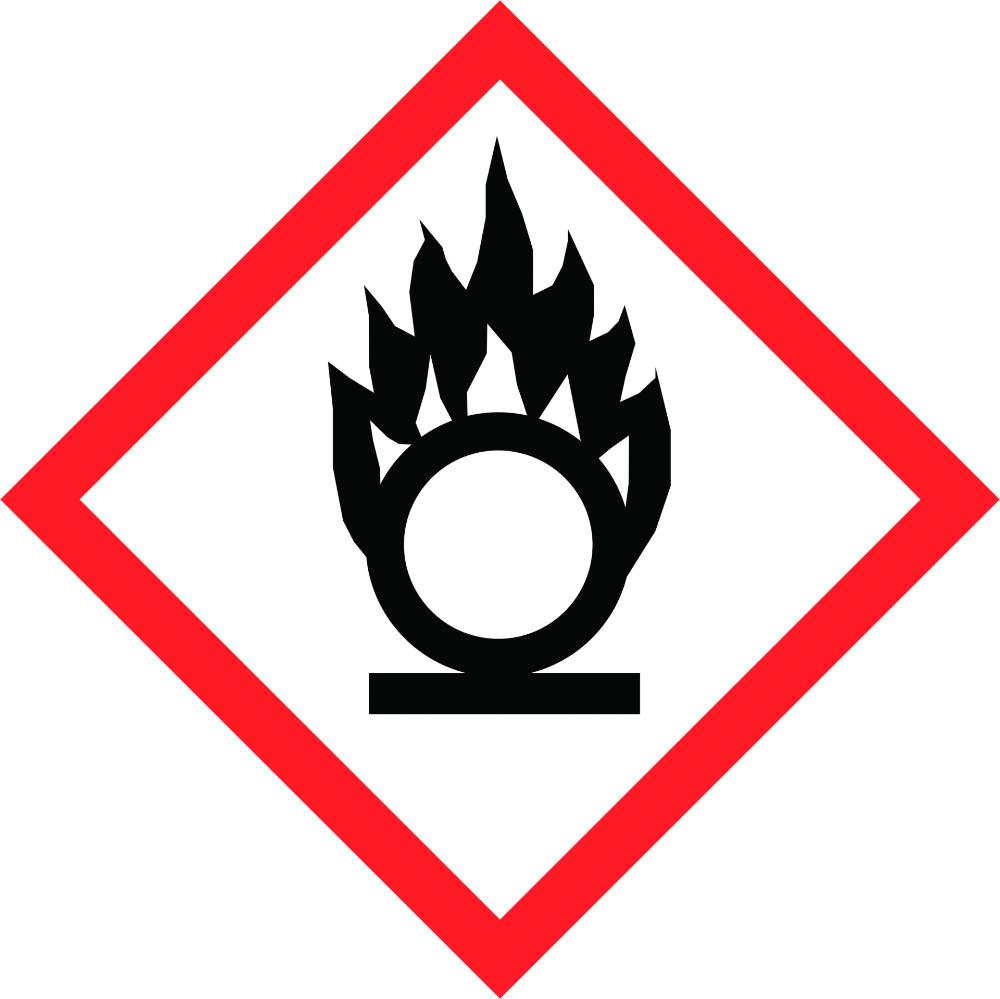
Flame Over Circle Pictogram and Definition
When you see this icon on a chemical label, it indicates that the hazardous product is an oxidizer. Keep in mind that oxidizers can potentially ignite a fire by boosting the oxygen level in the surrounding air. Stay alert and handle with caution.
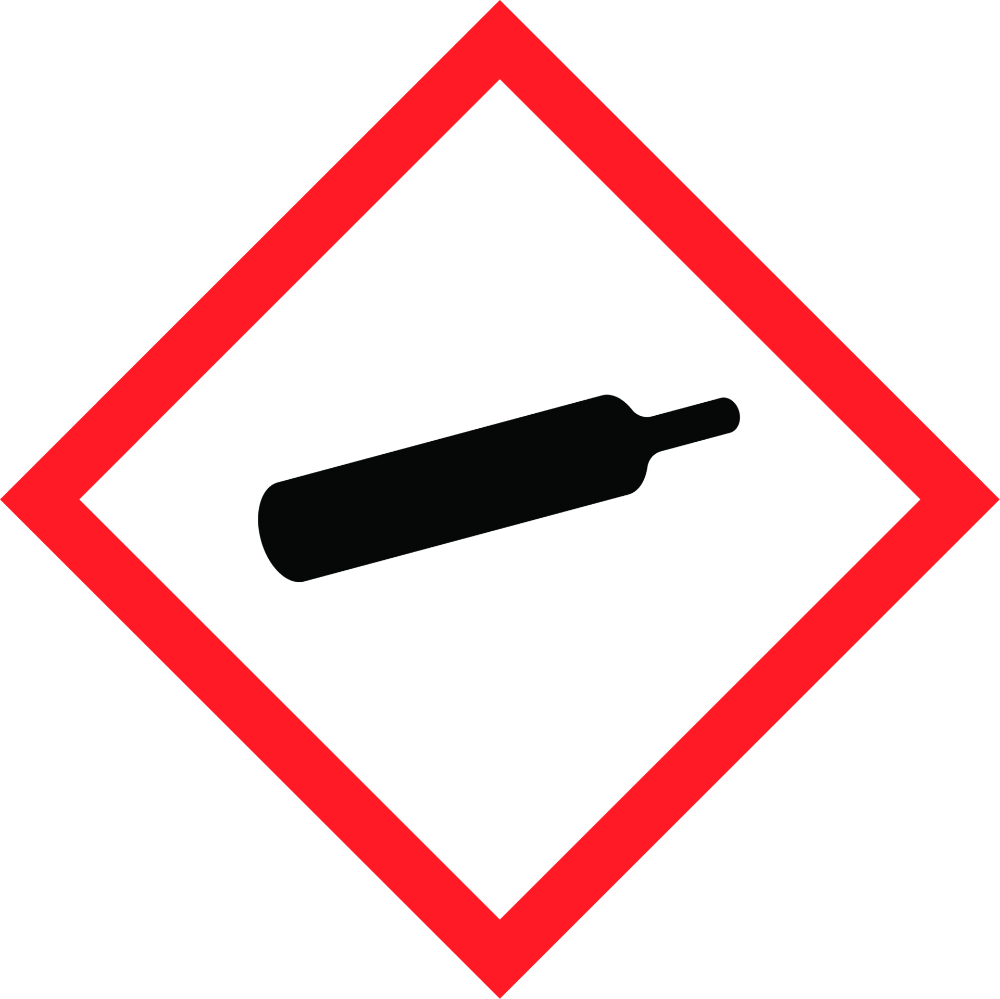
Gas Cylinder Pictogram and Definition
When you see this gas cylinder symbol on a chemical label, it indicates that the substance is a gas that has been turned into compressed gas, liquefied gas, or dissolved gas under a pressure of 29 pounds per square inch or greater.
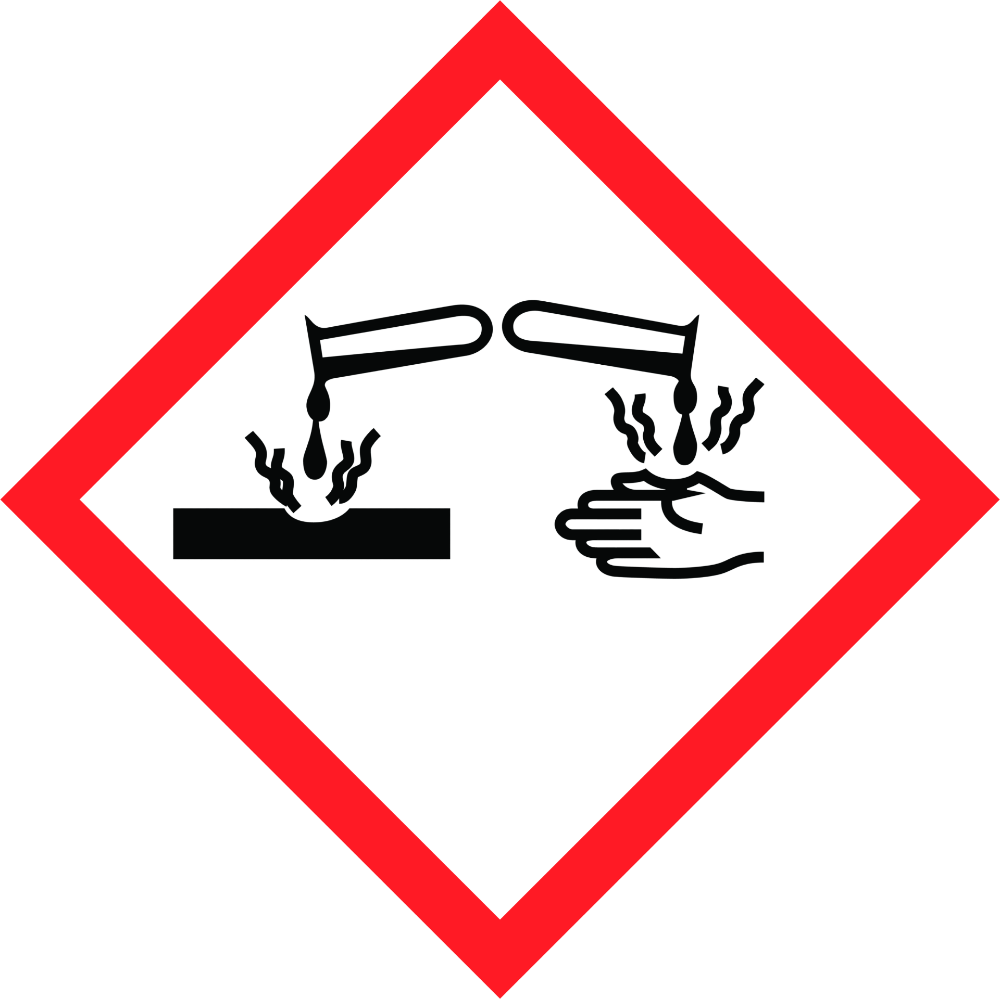
Corrosion Pictogram and Definition
This symbol on a chemical label indicates that the substance can seriously harm your skin and eyes and damage metals.
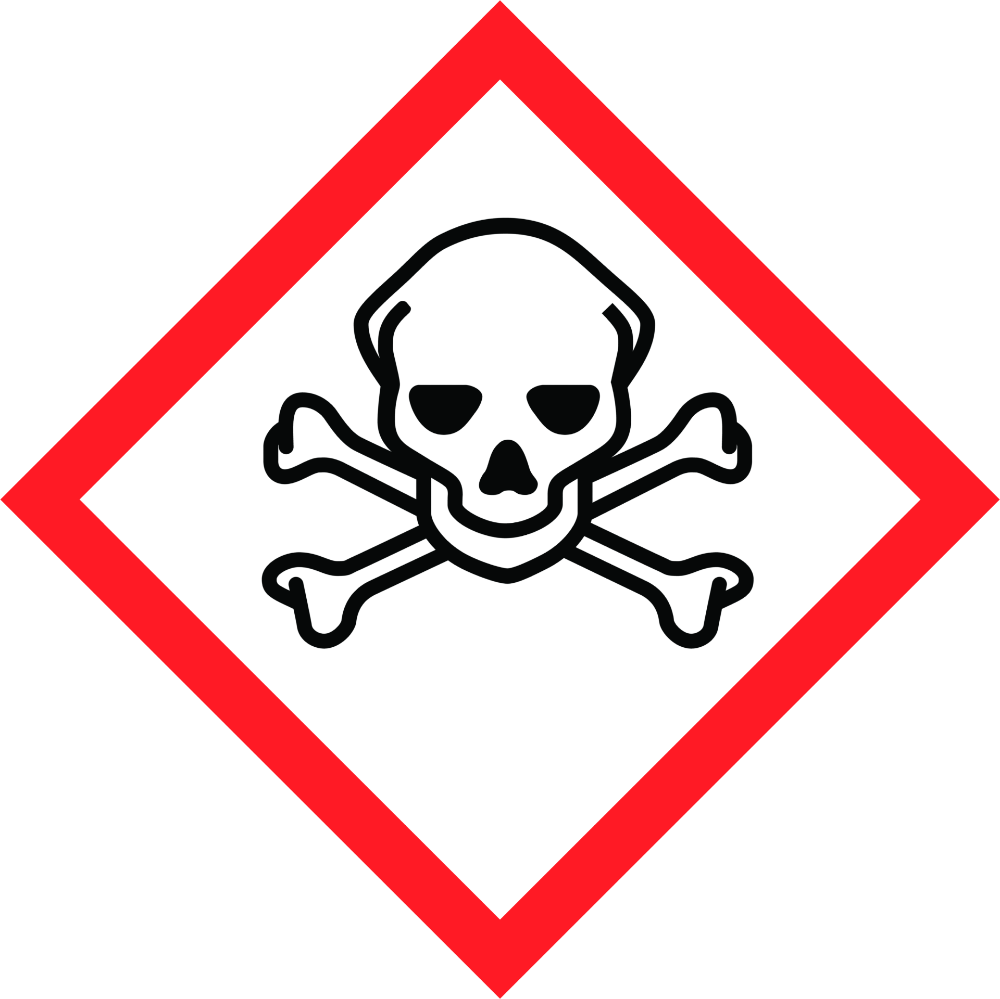
Skull and Crossbones Pictogram and Definition
Chemical labels that display this specific symbol indicate a health hazard in which the substance poses a risk of acute toxicity. Substances and mixtures with this symbol indicate an aspiration hazard if you inhale it or poisonous and infectious materials if ingested. If you make contact with the hazardous material, a single dose can be life-threatening or poisonous.
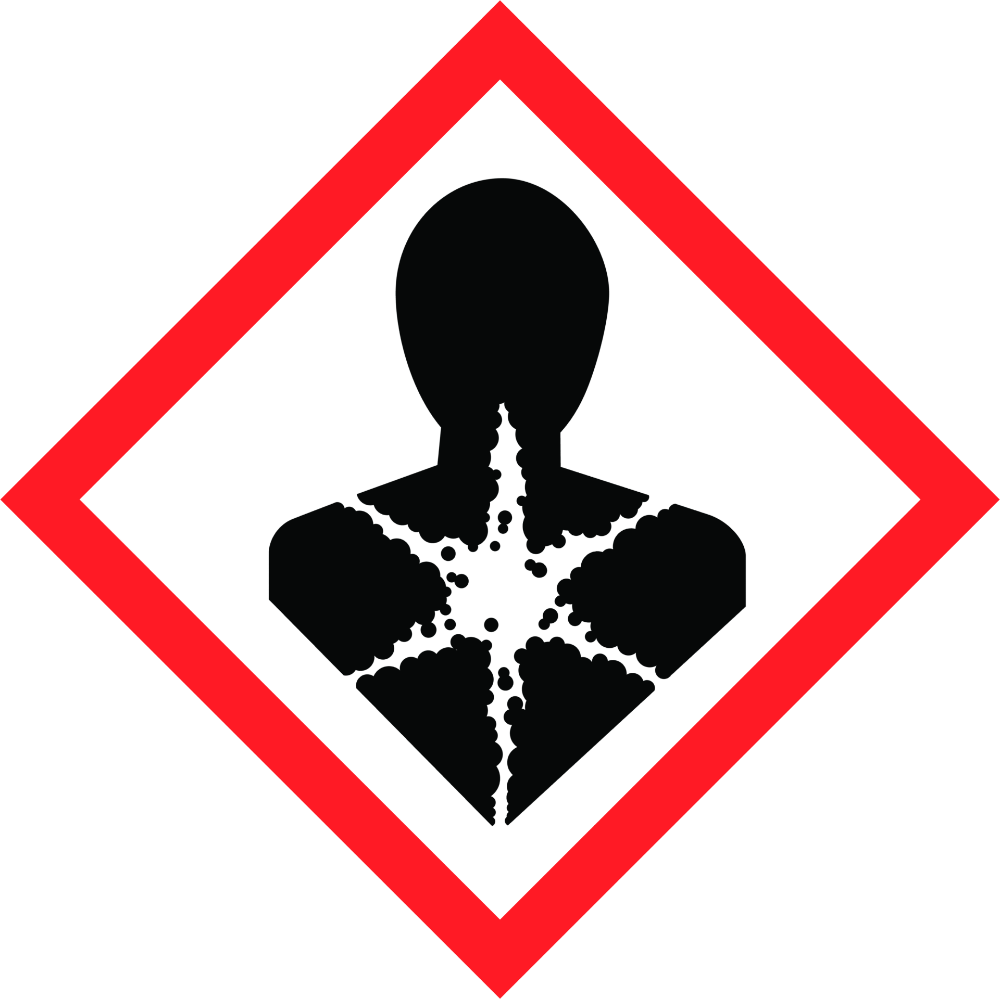
Health Hazard Symbol and Definition
The health hazard pictogram is placed on chemical labels when the substance presents hazards such as carcinogenic properties that may cause cancer, respiratory sensitizer that may lead to respiratory irritation, reproductive toxicity that may harm fertility or the unborn child, specific target organ toxicity that may damage bodily organs, mutagenicity that may cause genetic defects, and aspiration toxicity that may be fatal if swallowed and it enters the airways.
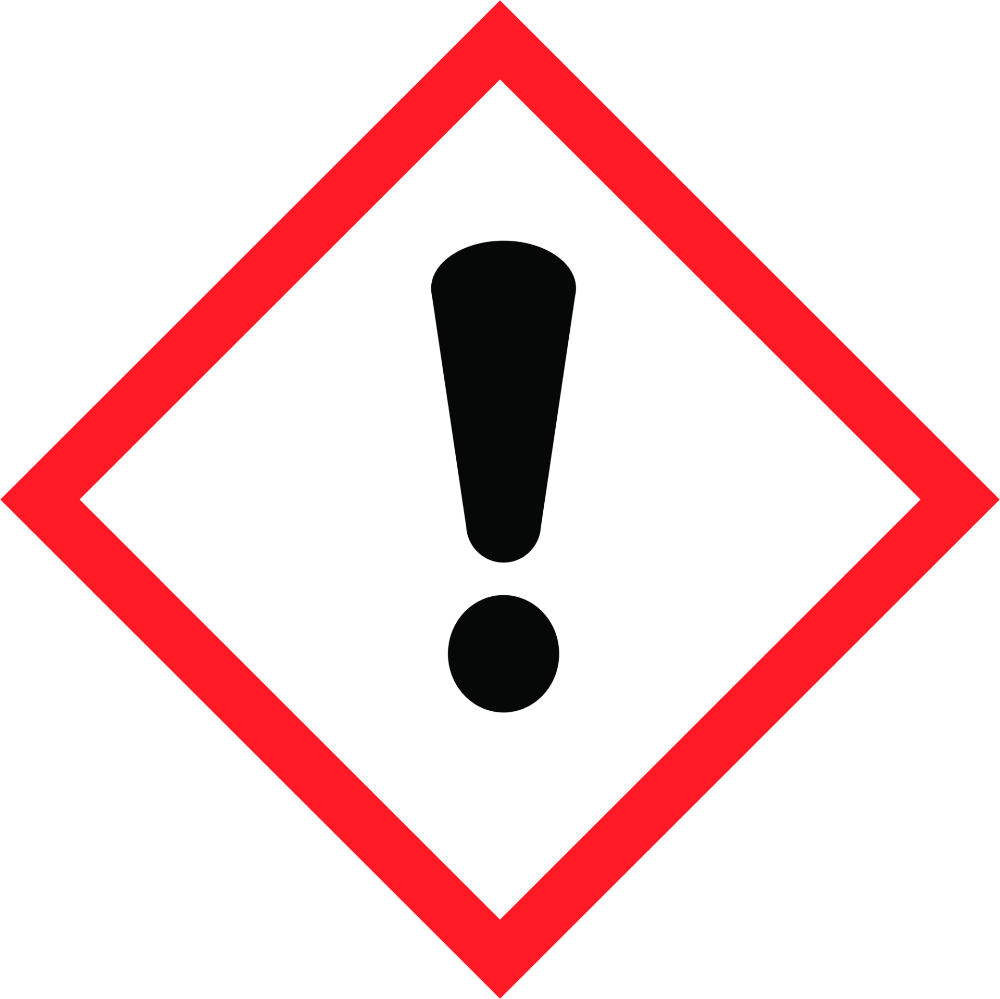
Exclamation Mark Pictogram and Definition
Substances and mixtures with this symbol indicate a potential hazard associated with various substances. These health hazards encompass skin or eye irritation, respiratory or skin sensitization from allergic reactions, acute toxicity that can result in organ damage or even death from a brief exposure, narcotic effects such as drowsiness, lack of coordination, dizziness, and respiratory tract irritation.
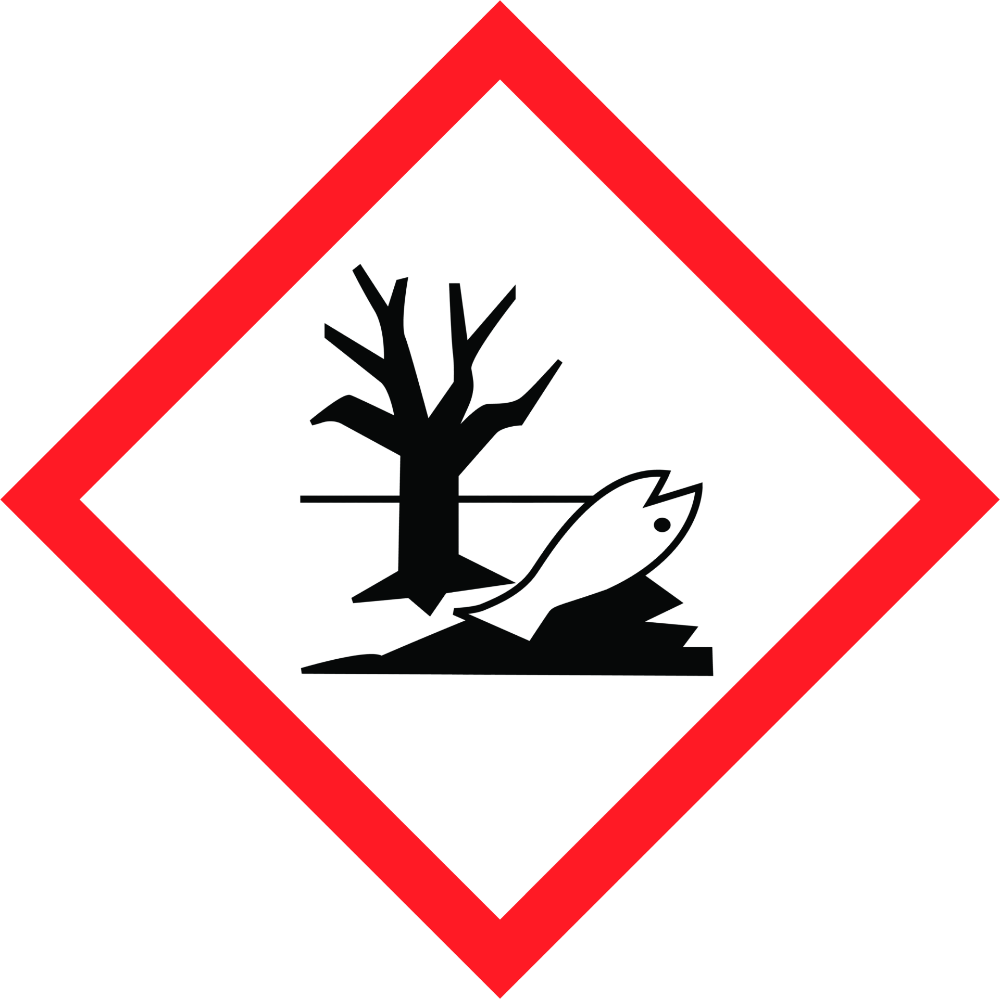
Environment Pictogram and Definition
While WHMIS 2015 does not mandate categorizing and identifying environmental hazards, this hazard symbol indicates toxicity for aquatic life. When it comes to aquatic safety, it's important to be aware of the two types of hazards to protect our aquatic ecosystems:
- Short-term hazards: immediate impact on aquatic life forms like fish, algae, and crustaceans
- Long-term hazards: lasting effects on organisms, such as bioaccumulation and degradation

Biohazardous Infectious Materials Pictogram and Definition
This WHMIS symbol represents biohazards in the form of microorganisms, such as bacteria, viruses, fungi, and parasites that can cause infection, with or without toxicity, in humans or animals.
Conclusion: It's Important to Complete SDS Pictograms Training
Understanding SDS pictograms is crucial for workplace safety. These symbols provide vital information about the hazards associated with a substance and allow workers to take appropriate precautions to prevent accidents and injuries. Workers who familiarize themselves with the different hazard classes, categories, and corresponding symbols, can ensure their safety and the safety of those around them.
Safety should always be a priority when working with hazardous products and materials.
For more information, please contact us to inquire about our safety training programs.


